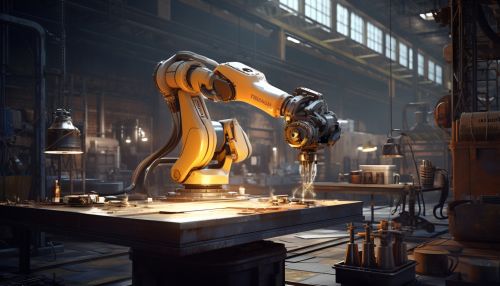Artificial Intelligence in Robotics
Overview
Artificial Intelligence (AI) in robotics refers to the application of AI algorithms and methodologies to enable autonomous behavior in robotic systems. AI provides the capability for robots to perceive their environment, reason about it, and execute tasks based on their perception and reasoning. This field is a fusion of AI and robotics, two disciplines that have had significant development over the past few decades.


History of AI in Robotics
The history of AI in robotics can be traced back to the mid-20th century, when the concept of intelligent machines was first proposed. Early robotic systems were primarily rule-based and lacked the ability to adapt to changing environments. However, with the advent of AI, robots have evolved from simple programmable machines to intelligent systems capable of learning and adapting to their surroundings.
AI Techniques in Robotics
There are several AI techniques that are commonly used in robotics. These include machine learning, computer vision, natural language processing, and planning and decision making.
Machine Learning
Machine learning is a subset of AI that provides systems the ability to automatically learn and improve from experience without being explicitly programmed. In the context of robotics, machine learning algorithms can be used to enable robots to learn from their interactions with the environment and improve their performance over time.
Computer Vision
Computer vision is a field of AI that enables computers to interpret and understand the visual world. In robotics, computer vision techniques are used to enable robots to perceive their environment, recognize objects, and navigate.
Natural Language Processing
Natural Language Processing (NLP) is a branch of AI that focuses on the interaction between computers and human language. In robotics, NLP can be used to enable robots to understand and respond to voice commands or to understand and generate human language.
Planning and Decision Making
Planning and decision making are crucial aspects of AI in robotics. These involve the use of AI algorithms to plan the actions of a robot and make decisions based on the current state of the environment.
Applications of AI in Robotics
AI in robotics has a wide range of applications, including but not limited to industrial automation, healthcare, space exploration, and autonomous vehicles.
Industrial Automation
In industrial automation, robots equipped with AI capabilities are used to perform tasks that are dangerous, repetitive, or require high precision. These tasks include assembly, painting, welding, and material handling.
Healthcare
In the healthcare sector, AI-enabled robots are used in a variety of applications, including surgery, rehabilitation, and patient care. For example, surgical robots can perform complex procedures with high precision, while rehabilitation robots can assist in the recovery of patients with physical impairments.
Space Exploration
AI-powered robots are also used in space exploration. These robots, also known as rovers, are designed to navigate and perform tasks in the harsh and unpredictable environment of space.
Autonomous Vehicles
Autonomous vehicles are another significant application of AI in robotics. These vehicles use AI algorithms to perceive their environment, make decisions, and navigate without human intervention.
Future of AI in Robotics
The future of AI in robotics is promising, with ongoing research and development aimed at improving the capabilities of robots. Future advancements in AI and robotics could lead to the development of more intelligent and autonomous robots that can perform complex tasks and adapt to changing environments.
